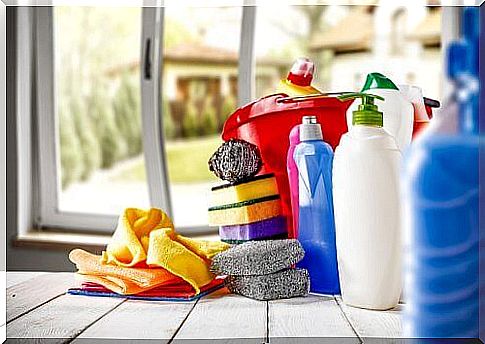12 Tips For People Allergic To Cats
A person allergic to cats can live comfortably with their pet if they put in place some very simple guidelines to limit exposure to allergens.

If you are one of the many people allergic to cats, know that you are not alone. A large part of the world’s population suffers from one or more allergic disorders (estimated at 30 to 40%), and experts comment that the prevalence of allergic diseases has increased worldwide.
Cat allergy is caused by proteins secreted in the skin, saliva and urine of these animals. When these proteins are transported into the air or adhere to inanimate objects, they spread and cause symptoms.
Below, we share some very simple guidelines that can help you live without too much discomfort with your feline pet.
Measures to limit the spread of allergens produced by the cat

- Give your cat a weekly bath : this measure can reduce the concentration of allergens in the skin by up to 84%. Use a shampoo formulated for pets.
- Brush your cat every day: Brushing removes loose hair and dandruff, helping to reduce allergens in the environment. It can also reduce the cat’s need for cleaning by decreasing the distribution of saliva – and its proteins – they release during the cleaning process.
- A person who is not allergic to cats should brush. Preferably in a room that the allergic person does not use or in a remote area.
- Spay or neuter your cat – these procedures decrease allergen production.
Measures to reduce the reaction of people allergic to cats
- Get a diagnosis: Your doctor may do a skin test or a blood test to detect allergies. You may find that the allergic reaction is a response to something else, such as mold, mites, or another pet.
- Wash your hands often : especially after touching the cat. This way, you’ll avoid bringing your pet’s allergen hands to your nose or other parts of the body.
- Avoid having a large number of cats, because the more cats you have at home, the greater the concentration of allergens.
- Change your diet: A diet high in omega 3 fatty acids can reduce the number of allergic reactions. Also, taking an extra dose of vitamin C is believed to help keep sneezing at bay.
- Other supplements, such as zinc picolinate and cod liver oil, also have hypoallergenic properties and can help control your cat’s allergy.
- Reduce contamination: the person allergic to cats should bathe and change clothes frequently. Bathing before bedtime is especially important to reduce contamination of the resting area. On the other hand, it would be convenient to sleep in a room without cats.
Measures to be implemented in a home with people allergic to cats

- Avoid “dry” cleaning (using brooms and dusters), which can spread pet allergens. Instead, use statically charged cleaners or wet rags and mops that trap and kill allergens.
- Use HEPA filters: In addition to using a HEPA filter for heating and cooling systems, it is recommended to use an air purifier with a HEPA filter in the room where the animals spend most of their time. This will reduce the allergen concentration by 5 or 7 times.
- Also, clean your home daily with a vacuum cleaner that has a HEPA filter. Without this filter, the vacuum cleaner can spread the allergen over more surfaces in your home. Vacuum floors, upholstery and curtains or blinds.
- Give the cat a bed or blanket in each room – this will allow as much hair and dandruff as possible to get stuck in the place so you can easily clean it up later.
- Keep cat-free areas in your home – one of those places should be your bedroom. Keeping allergens out of your sleeping space can help a lot.
If you are allergic to cats, keep these guidelines in mind so that you can live comfortably with your pets.








